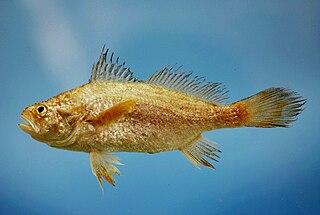
Timor is an island at the southern end of Maritime Southeast Asia, north of the Timor Sea. The island is divided between the sovereign states of East Timor on the eastern part and Indonesia on the western part. The Indonesian part, also known as West Timor, constitutes part of the province of East Nusa Tenggara. Within West Timor lies an exclave of East Timor called Oecusse District. The island covers an area of 30,777 square kilometres. The name is a variant of timur, Malay for "east"; it is so called because it lies at the eastern end of the Lesser Sunda Islands. Mainland Australia is less than 500 km away, separated by the mentioned Timor Sea.

The Russian Far East comprises the Russian part of the Far East, the eastermost territory of Russia, between Lake Baikal in Eastern Siberia and the Pacific Ocean.

Trinidad is the larger and more populous of the two major islands of Trinidad and Tobago. The island lies 11 km (6.8 mi) off the northeastern coast of Venezuela and sits on the continental shelf of South America. Though geographically part of the South American continent, from a socio-economic standpoint it is often referred to as the southernmost island in the Caribbean. With an area of 4,768 km2 (1,841 sq mi), it is also the fifth largest in the West Indies.

A lentigo is a small pigmented spot on the skin with a clearly defined edge, surrounded by normal-appearing skin. It is a harmless (benign) hyperplasia of melanocytes which is linear in its spread. This means the hyperplasia of melanocytes is restricted to the cell layer directly above the basement membrane of the epidermis where melanocytes normally reside. This is in contrast to the "nests" of multi-layer melanocytes found in moles. Because of this characteristic feature, the adjective "lentiginous" is used to describe other skin lesions that similarly proliferate linearly within the basal cell layer.

The Clavicipitaceae are a family of fungi within the order Hypocreales. A 2008 estimate placed 43 genera in the family, but recent work has increased this number to 97.

New Guinea is a large island separated by a shallow sea from the rest of the Australian continent. It is the world's second-largest island, after Greenland, covering a land area of 785,753 km2 (303,381 sq mi), and the largest wholly or partly within the Southern Hemisphere and Oceania.
Ephelis is a genus of moths of the family Crambidae.
Schistura ephelis is a species of ray-finned fish in the largest genus of stone loaches, Schistura. It is known only from the drainage basin of the Nam Ngum in Laos where it has been collected from among stones in riffles.

Ephelis pudicalis is a species of moth in the family Crambidae. It is found in France and Spain.

Stellifer is a genus of fish in the family Sciaenidae, the drums and croakers. It is found in New World waters. Many species are known commonly as stardrums.

Odontiinae is a subfamily of moths of the family Crambidae. The subfamily was described by Achille Guenée in 1854.
Ephelis belutschistanalis is a moth in the family Crambidae. It is found in Iran.
Ephelis brabanti is a moth in the Crambidae family. It is found in Algeria.
Ephelis chirazalis is a moth in the family Crambidae. It is found in Iran.
Ephelis flavomarginalis is a moth in the family Crambidae. It is found in the United Arab Emirates and Iran.
Ephelis sudanalis is a moth in the family Crambidae. It is found in Sudan.
Ephelis maesi is a moth in the Crambidae family. It was described by Mey in 2011. It is found in Namibia, South Africa and Zimbabwe.
Ephelis robustalis is a moth in the family Crambidae. It was described by Hans Georg Amsel in 1970. It is found in Afghanistan.
Adyar creek is a backwater estuary located in Adyar, Chennai at the mouth of the Adyar river along the Coromandel Coast of the Bay of Bengal. The creek begins near the Chetinnad Palace, extending northward into the mainland and taking a complete U-turn near the Foreshore Estate before ending near Mandavelipakkam. The creek surrounds the Quibble Island.












